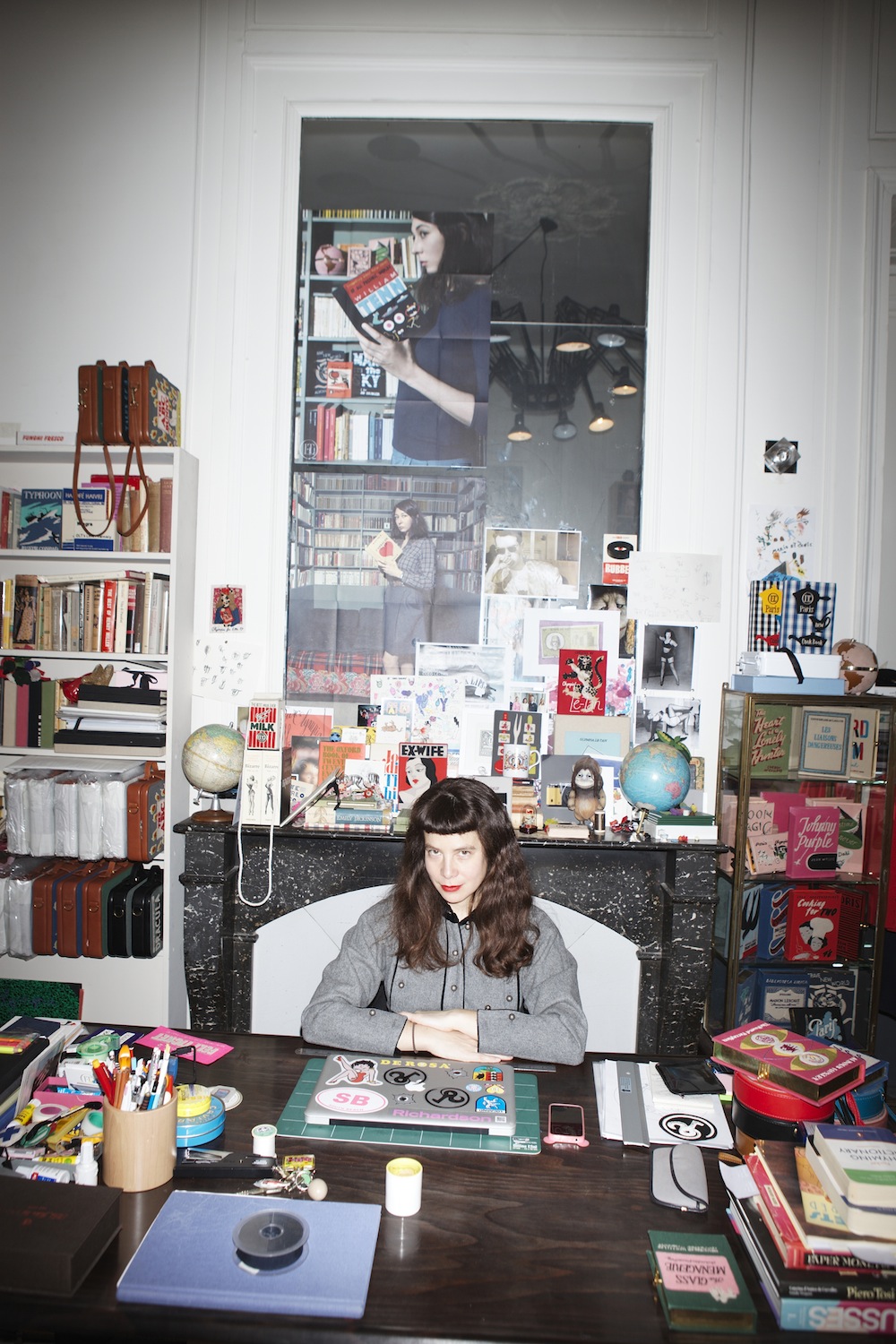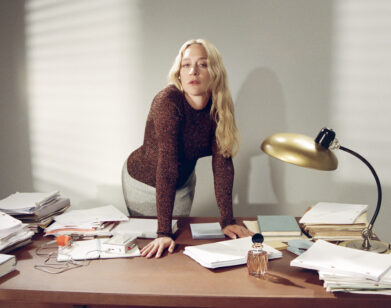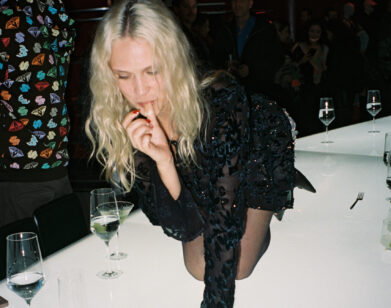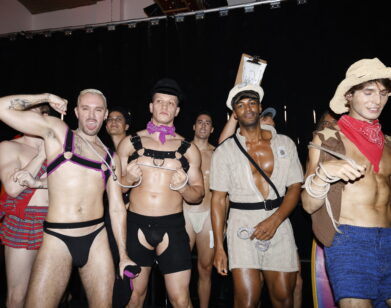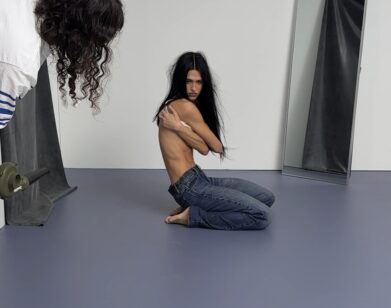Olympia Le-Tan Is More Than Bookish
Money, corruption, and the bourgeoisie are the inspirations behind the ever-clever Olympia Le-Tan’s fall ‘12 collection of literary handbags. “It was actually Olivier Zahm’s idea,” she says, smirking from behind the desk in her colorfully quaint Paris studio. Apparently, the Purple magazine editor, who’s one of Le-Tan’s close friends, gifted her a book about cash (although she can’t remember which one, exactly) and the collection evolved from there.
Born in London and raised in Paris, the 34-year-old Le-Tan, whose father and sometimes collaborator is celebrated illustrator Pierre Le-Tan, launched her line of handbags and minaudières in 2009. An admitted bookworm (but not, she asserts, an intellectual), the designer looks at first-edition novels, like J.D. Salinger’s Catcher in the Rye, Boris Pasternak’s Doctor Zhivago, and Ernest Hemingway’s For Whom the Bell Tolls, and recreates them in the form of quirky canvas and felt clutches.
“First of all, it has to have a nice cover,” says Le-Tan of her requirements for the books she chooses. “And it has to have a good title, as well as good content,” she adds. Naturally, the crafty femme is tireless in her research, scouring bookshops (her favorite is Shakespeare and Co., which was the setting for Mourir Auprès de Toi , the collaborative film she created with Spike Jonze last October) for novels worthy of the fashion set.
Le-Tan, who featured her favorite book, Carson McCullers’s The Heart is a Lonely Hunter, in her first collection, tries to read most of the novels she features. And she suggests that it’s important for her clients to be knowledgeable about their accessories of choice as well. “It was really fun when Michelle Williams wore The Misfits bag at the BAFTAS. She had just played Marilyn [Monroe], and she wanted a bag that had something to do with her.” Bearing in mind that the 1961 film not only starred Monroe, but was also written by her ex-husband, Arthur Miller, the screenplay clutch was an apt choice. “I like it when people are interested in the title and don’t just carry the bag because of the shape or because it’s ‘in’.”
But the collection isn’t solely about literature this season. For fall, the designer has created a circular Tiffany blue caviar-box bag, a “posh girl” leather and suede doctor’s bag, and a banknote clutch that features an illustration by graffiti artist and close pal, André Saraiva. Fall also marks Le-Tan’s first foray into ready-to-wear. “I vaguely said I might do a womenswear collection to someone from Women’s Wear Daily and then it was all over the press. So I sort of thought I had to do it,” laughs Le-Tan, who’s also looking forward to a capsule collection for Net-a-Porter (out this May) and traveling to Japan mid-March to open a pop up shop. Inspired largely by Le-Tan’s childhood dress coats, several of which hang on a rack in her studio, the collection features flirty tartan schoolgirl skirts, college-striped sweaters, cozy cardigans with Liberty-print collars, and a cropped wool top with velvet trim.
However, Le-Tan notes that the collection is intended to be a backdrop that enhances her bags. “They are clothes that match the bags. It’s not the other way around. It’s not a fashion revolution. It’s very classic, quite sexy and inspired by my personal style,” says the designer, who, on this particular day, embraces her signature pin-up aesthetic with Bettie Page bangs, matte red lips, a vintage gray dress, and polka dot stockings. She completes her ensemble with a pair of Charlotte Olympia pumps, the toes of which are embroidered with kittens’ faces. “I only wear her shoes. They’ve got my name in the title,” she jokes.
Of course, there will be book bags, too, like William Makepeace Thackeray’s Vanity Fair, works by Charles Dickens, a few economics texts, and Shakespeare’s The Merchant of Venice, which the designer coyly explains was included because “there’s money involved.”
The collection will be presented on March 3 at Musée Nissim de Camondo, a lavish early 20th century residence-turned-museum modeled after a petite château on the grounds of Versailles. Originally owned by prominent Parisian Belle Epoque banker Moïse de Camondo, the museum is filled with decadent baubles and objects d’art. Considering Le-Tan’s fall/winter ‘12 themes, it is, as she puts it, “kind of the perfect place for the collection.”

